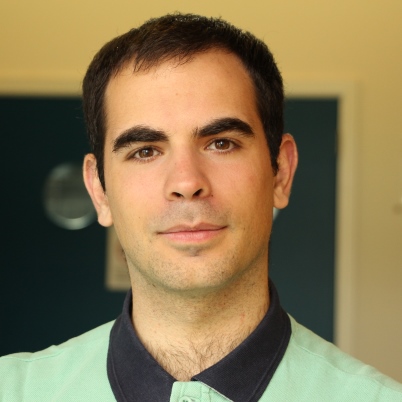 Early Stage Researcher
Early Stage ResearcherPhimeca Engineering (France)
Project 8: Probabilistic modelling of bridge damage based on damage indicators
Research Interests:
Structural analysis; Life-cycle analysis of bridges; Structural health monitoring of bridges; Probabilistic modeling; Risk analysis
Biography:
Barbara graduated from the Faculty of Civil Engineering at the Budapest University of Technology and Economics in 2013. During her Bachelor studies, she spent one year in Prague at the Czech Technical University as an exchange student.
In the summer of 2012 she did a traineeship at the company Eurovia in the Czech Republic.
From September 2013 till February 2015 she was enrolled to the Erasmus Mundus Joint Master course “SUSCOS” – Sustainable Constructions under Natural Hazards and Catastrophic Events. During the 18 months of the program she followed courses in Belgium and Romania, while she wrote her Master Thesis in Portugal. She joined TRUSS ITN in September 2015. A summary of her research highlights and training, dissemination and outreach activities in TRUSS other than network-wide events, is provided in the pdf below, followed by more detailed info on her research outputs.
Research Outputs:
Publications in TRUSS
Journal papers
Conference contributions
This paper reports on recent contributions by the Marie Skłodowska-Curie Innovative Training Network titled TRUSS (Training in Reducing Uncertainty of Structural Safety) to the field of structural safety in rail and road bridges (http://trussitn.eu). In TRUSS, uncertainty in bridge safety is addressed via cost efficient structural performance monitoring and fault diagnostics methods including: (1) the use of the rotation response due to the traffic traversing a bridge and weigh-in-motion concepts as damage indicator, (2) the combination of design parameters in probabilistic context for geometrical and material properties, traffic data and assumption on level of deterioration to evaluate bridge safety (via Bayesian updating and a damage indicator based on real time measurement), (3) the application of a fuzzy classification technique via feature selection extracted using empirical mode decomposition to detect failure, and (4) the testing of alternative vibration based damage sensitive features other than modal parameters. Progress has also been made in improving modern technologies based on optical fiber distributed sensing, and sensors mounted on instrumented terrestrial and on aerial vehicles, in order to gather more accurate and efficient info about the structure. More specifically, the following aspects have been covered: (a) the spatial resolution and strain accuracy obtained with optical distributed fiber when applied to concrete elements as well as the ideal adhesive, and the potential for detecting crack or abnormal deflections without failure or debonding, (b) the possibility of using the high-resolution measurement capabilities of the Traffic Speed Deflectometer for bridge monitoring purposes and, (c) the acquisition of bridge details and defects via unmanned aerial vehicles. -> Link to full text in academic repository
Probabilistic assessment of ageing bridges has become an important research area as it interests not only researchers but investors, municipalities and even governments. In this paper a simple bridge model is presented in a probabilistic context. A comparative study is carried out involving damage indicators and Bayesian updating. Bayesian updating is a powerful tool, which has been used in various research areas. However, using it for approximating the safety level of a bridge is challenging due to the various sources of uncertainties that may affect the performance of a measurement based damage indicator. The effects of different factors involved in the updating are examined in this paper and compared. [DOI] -> Link to full text in repository
The proposed approach combines a number of aspects. Firstly, a probabilistic bridge load model is established based on Weigh-In-Motion (WIM) data to mimic a realistic traffic flow and hence, the loads and their effects on the bridge. Traffic loading is highly correlated as the same vehicles influence many parts of the bridge. This has a significant influence on the probability of failure.
To model the resistance of the bridge a probabilistic approach is used and full correlation between segments is assumed. Combining the load and resistance models, the probability of failure can be inferred. In the future work the bridge safety model, more precisely the resistance model, will be updated. Bayesian updating will be used in the current framework based on the information obtained from specific damage indicators.
This study aims at obtaining valuable information regarding the importance of the different aspects of bridge safety models and the sensitivity of the probability of failure (i.e. the level of safety) to them. It is also expected to confirm the applicability of a Bayesian approach to this problem. -> Link to full text in repository

















